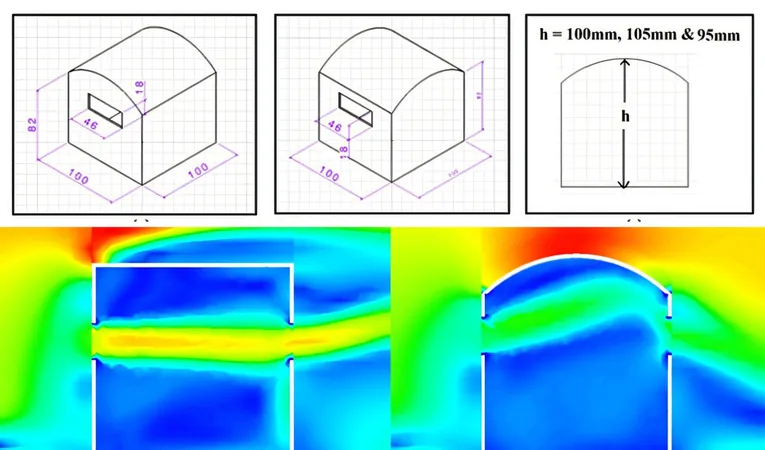
Unveiling the Secrets: How to Combat Badminton Birdie Drift Effectively!
2024-11-12
Author: Wei
Indoor badminton courts, the battlegrounds for some of the most exciting tournaments in the sport, often face a hidden enemy: birdie drift. The seemingly negligible airflow from the heating, ventilation, and air conditioning (HVAC) systems, along with cross ventilation, can significantly impact the lightweight feathered shuttlecock’s trajectory.
This phenomenon, known as wind drift, has spurred controversies in various high-stakes matches, frustrating players and altering the outcomes of crucial games. One might think that simply switching off the ventilation would be the ultimate fix. However, this approach could lead to an uncomfortable playing environment, compromising athletes’ performances and affecting their overall experience.
In a groundbreaking study published in Physics of Fluids, researchers have proposed innovative solutions to this long-standing issue. Lead author Karthik Jayanarasimhan suggests that optimizing roof configurations may be the key to reducing wind drift in badminton courts. Specifically, he advocates for constructing new badminton stadiums with a barrel roof design that includes ventilation openings.
"Our findings indicate that the shape of the roof plays a crucial role in airflow management during matches. We believe this research can guide decisions for the construction of future badminton venues," Jayanarasimhan stated.
To arrive at their conclusions, the research team conducted extensive simulations, comparing airflow dynamics in stadiums with barrel roofs versus flat roofs. The results revealed that barrel roofs with specific ventilation openings could drastically minimize wind drift, offering a more stable environment for players to showcase their skills.
However, Jayanarasimhan and his team acknowledge the practical constraints facing existing venues. While remodeling every stadium isn't feasible, they emphasize the need for players and organizers to identify areas within the court that experience the least wind drift. This strategic approach could prove essential in enhancing performance and ensuring fair play during competitions.
"Renovating ventilation openings in existing barrel-roofed stadiums could lead to significant improvements without the hefty costs associated with rooftop reconstruction," Jayanarasimhan added.
As discussions around this research unfold, the badminton community is urged to rethink traditional methods of managing indoor conditions. It seems the keys to elevating the sport to new heights may lie not just in player skill but also in the very architecture of the venues where they compete.
So, as the world of badminton looks ahead to new stadium constructions and potential renovations, the implications of this research may ripple out far beyond just reducing wind drift—paving the way for better athlete experiences and more thrilling matches. Will this scientific insight change the future of badminton? Only time will tell!





 Brasil (PT)
Brasil (PT)
 Canada (EN)
Canada (EN)
 Chile (ES)
Chile (ES)
 Česko (CS)
Česko (CS)
 대한민국 (KO)
대한민국 (KO)
 España (ES)
España (ES)
 France (FR)
France (FR)
 Hong Kong (EN)
Hong Kong (EN)
 Italia (IT)
Italia (IT)
 日本 (JA)
日本 (JA)
 Magyarország (HU)
Magyarország (HU)
 Norge (NO)
Norge (NO)
 Polska (PL)
Polska (PL)
 Schweiz (DE)
Schweiz (DE)
 Singapore (EN)
Singapore (EN)
 Sverige (SV)
Sverige (SV)
 Suomi (FI)
Suomi (FI)
 Türkiye (TR)
Türkiye (TR)
 الإمارات العربية المتحدة (AR)
الإمارات العربية المتحدة (AR)